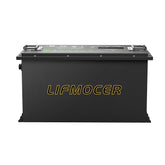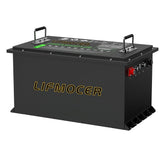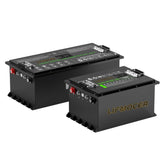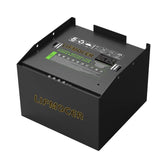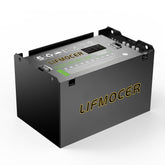What to Do After Jump Starting Car?
Introduction
Jump starting a car is often a quick fix to get your vehicle running again, but many drivers don't realize that it's only the first step. Knowing what to do after jump starting car is just as important as knowing how to jump it in the first place. If you ignore the next steps, you might face issues like alternator not charging after jump start or even find that your car battery dies again after jump start. These problems can shorten your battery's life and leave you stranded once more.
As a mechanic, I've seen this happen more times than I can count — a successful jump followed by another dead battery a few hours later. The truth is, your car needs proper care right after a jump to restore its power safely. In this guide, I'll explain what to do immediately after jump starting your car to protect your battery, avoid damage, and ensure your vehicle stays reliable.

What to Check After Jump Starting a Car
Once the dead car is jump started and the jumper cables are removed safely, the next step is to check whether everything in your vehicle is functioning normally. Many drivers think the job is done, but according to discussions on Reddit, several quick inspections can prevent another car battery dies again after jump start situation. Based on what many Reddit users report and what I see in my shop, here’s what you should look for:
Dashboard warning lights Make sure the battery light, check engine light, or other alerts are not staying on. A glowing battery light often signals alternator not charging after jump start, which means the charging system needs immediate attention.
Headlight brightness Dim or fluctuating headlights are an early sign of low voltage or a weak alternator. Stable brightness usually means the electrical system is functioning properly.
Engine idle quality The engine should idle smoothly. If it shakes, stalls, or the RPM jumps, there may be unresolved electrical or charging problems.
Accessory performance Try turning on the AC, radio, or power windows. Slow or inconsistent response may indicate the battery isn't receiving enough charge.
Battery terminals and cables Look for loose clamps, corrosion, or damaged wires. Issues like corroded cables or loose terminals can make the battery lose power again shortly after a jump.
Taking one minute to check these items can help you spot problems before they turn into another breakdown, especially if the battery or alternator is already weakened.

How Long to Leave a Car Running to Charge Battery After Jump Start
After your car successfully starts, the next question is how long to leave a car running to charge battery after jump start. The answer depends on the condition of your battery and alternator, but generally, letting the engine run for at least 20 to 30 minutes is recommended. This allows the alternator to fully recharge the battery and restore enough energy for your next start.
I often see drivers make the mistake of shutting the engine off right after a jump — and then the car battery dies again after jump start just minutes later. That happens because the alternator hasn't had enough time to replace the power used during the jump. You can leave the car idling, but if possible, driving is even better. When you drive, the alternator spins faster, generating more power than it does at idle speed — that's why there's a clear difference between idle vs drive after jump start.
If your battery is old or weak, consider keeping the engine running a little longer before stopping. However, if the battery doesn't seem to hold a charge even after driving, you might be facing an alternator not charging after jump start issue or a failing battery that needs replacement.
Do I Need to Replace Battery After Jump Start?
A single jump start doesn't always mean your battery is finished — but it can be a warning sign. Many drivers immediately wonder do I need to replace battery after jump start, and the answer depends on how the battery behaves afterward. If your vehicle starts normally in the days that follow, the battery may have simply been drained by lights left on, cold weather, or a short period of inactivity.
However, if the car battery dies again after jump start, that's a strong indicator the battery can no longer hold a charge. Modern batteries are designed to deliver high bursts of power, not to be fully drained. Once they drop too low, the internal plates can weaken, making it harder for the battery to recover even when the alternator is working correctly.
It's also important to pay attention to symptoms like slow cranking, dim headlights, electrical glitches, or the battery warning light staying on. These issues can also point to the alternator not charging after jump start, which means the charging system — not the battery — may be failing. Testing both the battery and alternator ensures you don't replace the wrong component.
If repeated jumps are needed within a short time, replacing the battery is usually the safest and most cost-effective solution to avoid future breakdowns.

Common Reasons a Car Battery Dies Again After Jump Start
If your car loses power again shortly after a jump, you're not alone — many drivers search for why their car battery dies again after jump start. When this happens, it usually means something inside the battery or charging system isn't functioning correctly. Identifying the cause early prevents repeated breakdowns and protects your electrical system.
Here are the most common reasons a battery dies again after a jump start:
- Weak or damaged battery: Once a battery can no longer hold a charge, even a successful jump won't keep the car running for long.
- Alternator not charging after jump start: A failing alternator can't replenish the battery, forcing the battery to power the whole vehicle by itself.
- Loose battery terminals: If the connection is unstable, the battery can't receive or deliver power effectively.
- Parasitic drains: Hidden electrical draws — like faulty modules, interior lights, or aftermarket devices — can drain the battery overnight.
- Corroded cables or connectors: Corrosion increases resistance and limits the battery's ability to recharge.
- Extreme temperatures: Very hot or cold weather can reduce battery capacity and make recovery after a jump much harder.
When any of these issues appear repeatedly, a full battery and charging system test is the most reliable way to find the real problem and avoid another dead battery.
How to Remove Cables After Jumpstarting
Once your car is running steadily, disconnecting the jumper cables in the correct order is essential for safety and preventing sparks. Many drivers rush this step, but removing the cables properly protects both vehicles and ensures the battery doesn't get damaged again. Follow these steps carefully:
- Start with the black (negative) clamp on the previously dead car. Removing this connection first reduces the risk of accidental grounding or sparks.
- Remove the black (negative) clamp from the booster car. Once both negative clamps are off, the circuit becomes safer to handle.
- Disconnect the red (positive) clamp from the booster car. Make sure the clamp doesn't touch any metal surface during removal.
- Remove the red (positive) clamp from the previously dead battery. This completes the disconnection process, and the cars are now electrically separate.
- Keep the clamps from touching each other. Even after removal, touching red and black clamps together may cause sparks.
- Close the hoods securely and let the revived car run. Allow the battery and alternator to stabilize before driving.
How to Maintain Car Battery Health
If you want fewer surprises on the road, keeping your battery healthy is just as important as carrying a LIFMOCER lithium jump starter in your trunk. As a mechanic, I always tell drivers that most battery failures don't happen overnight — they build up slowly because of habits people don't even notice.
Start with the basics: pop the hood once in a while and take a good look at your terminals. They should be tight, clean, and sitting firmly in place. A loose terminal or a bit of corrosion is more than just “ugly”; it can block current flow and make your car crank slow or not start at all. I've seen drivers blame their battery when the real problem was a simple loose clamp.
Next, think about how and where you drive. Short trips are the biggest battery killers. If you're always running five-minute errands, the alternator never gets the chance to put charge back into the battery. After enough of these short drives, you end up depending on a portable jump starter just to get through the week. If that sounds like you, take the car on a longer drive every now and then — it really does help the battery recover.
Weather is another big one. Extreme heat cooks batteries from the inside, and freezing temperatures make your engine harder to turn over. When customers come to my shop complaining that their car won't start on a cold morning, it's usually because the battery was already weak. Parking indoors, avoiding long idle times in the heat, and doing seasonal voltage checks can save you a lot of trouble. Trust me — a good routine beats any car emergency power tool, even though it's smart to keep one.
And finally, watch out for parasitic drains. Interior lights, dashcams, aftermarket radios — all of these can quietly drain your battery overnight if something's wired wrong or left on. If your car keeps dying for “no reason,” this is usually the first thing I check. Fixing a parasitic draw early can add years to your battery's life and cut down the number of times you reach for your lithium jump starter.

Frequently Asked Questions
How long to leave a car running to charge battery after jump start?
You should let the car run for enough time to allow the alternator to recharge the battery. The exact duration depends on your battery condition, but maintaining a steady run after a jump ensures the battery gets enough charge.
Can I drive right after jump starting my car?
Yes, you can drive right after jump starting your car, but ensure the engine runs smoothly and dashboard lights are stable. A short drive helps the battery recover more efficiently.
Do I need to replace battery after jump start?
You may need to replace battery after jump start if it dies again or cannot hold charge. Repeated jumps indicate the battery may be weak or the alternator is not charging properly.
Why does my car battery die again after jump start?
A car battery dies again after jump start due to issues like a weak battery, alternator not charging after jump start, loose terminals, parasitic drains, or extreme temperatures.
Can jump starting damage my alternator or electronics?
If done correctly, jump starting rarely damages the alternator or electronics. Improper connections or repeated jumps can cause voltage spikes that may affect sensitive components.
What happens if I jump start wrong?
Jump starting wrong can create sparks, damage the battery, or harm electronics. Always connect the cables in the correct order: red to positive first, black to negative last.
Closing Remarks
At the end of the day, knowing what to do after jump starting car can save you a lot of trouble. I always remind drivers to check their battery and electrical system, understand how long to drive car after jump start, and stay aware of signs that might indicate the need to replace battery after jump start. With a little attention and regular maintenance, you can avoid unexpected breakdowns and keep your car running reliably, without constantly reaching for a jump starter.


